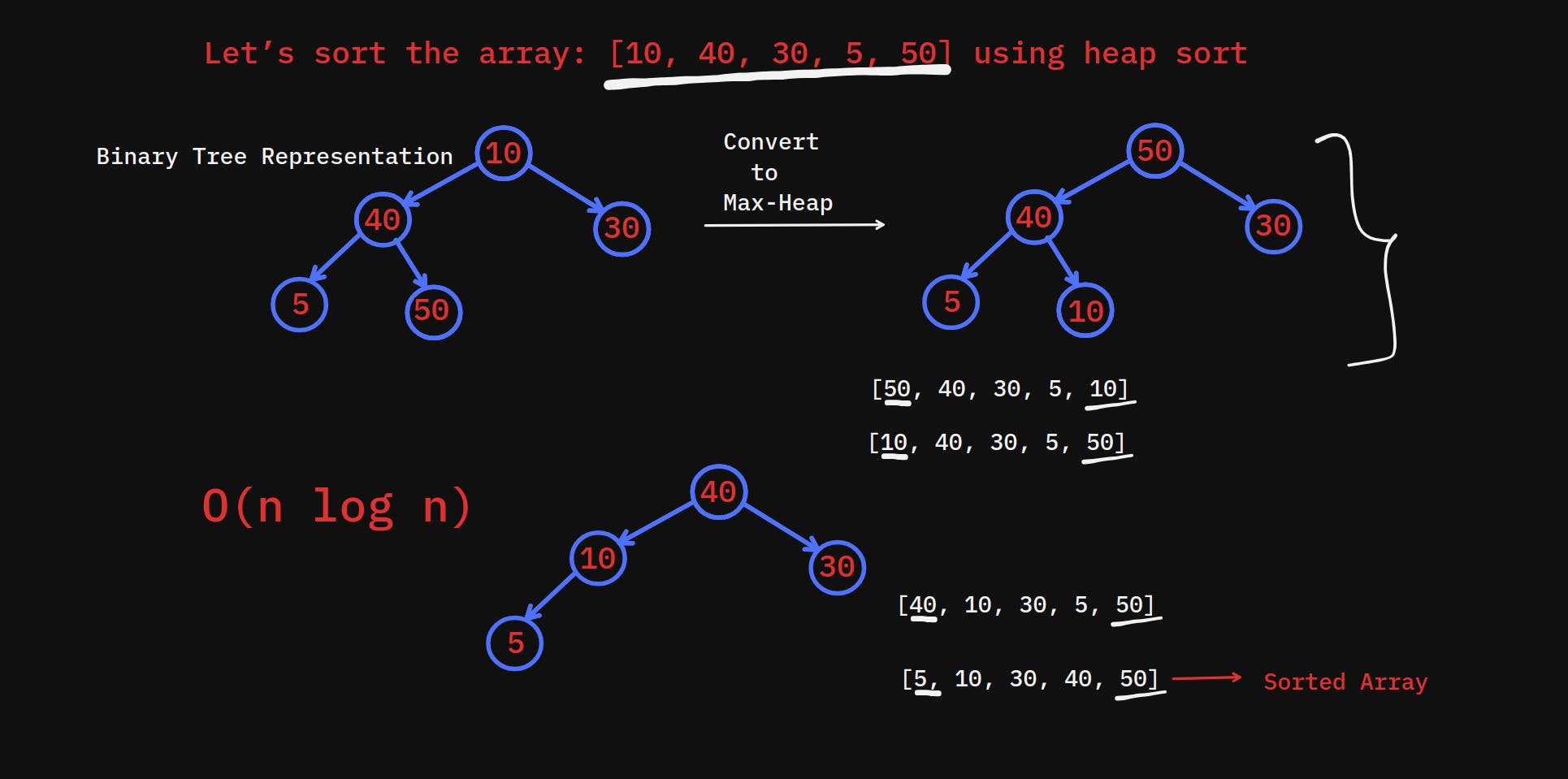Hackernoon
1M
288

Image Credit: Hackernoon
Heap Sort Algorithm: Your Complete Implementation Guide
- Heap Sort is a comparison-based sorting algorithm that uses a binary heap data structure to sort elements.
- It combines the speed of Quick Sort with the consistent performance of Merge Sort, making it an excellent choice for systems requiring guaranteed O(n log n) time complexity.
- Heap Sort operates in two main phases. The first phase transforms the input array into a max heap. The second phase repeatedly removes the maximum element.
- Before diving into Heap Sort, it is important to understand the heap data structure.
- Heap Sort is essential for understanding priority queues, and is also common in technical interviews.
- The author provides code examples of Heap Sort implementation in Python and JavaScript.
- Heap Sort has O(n log n) time complexity, O(1) extra space and is not stable but efficient for large datasets
- Some practical applications of Heap Sort include process scheduling, memory management, I/O request handling, and sorting large files in databases.
- Optimization strategies for Heap Sort include iterative heapify, bottom-up heap construction, and cache-friendly implementations.
- Common pitfalls and solutions for Heap Sort include array index calculation, heap size management, and handling edge cases.
Read Full Article
17 Likes
For uninterrupted reading, download the app